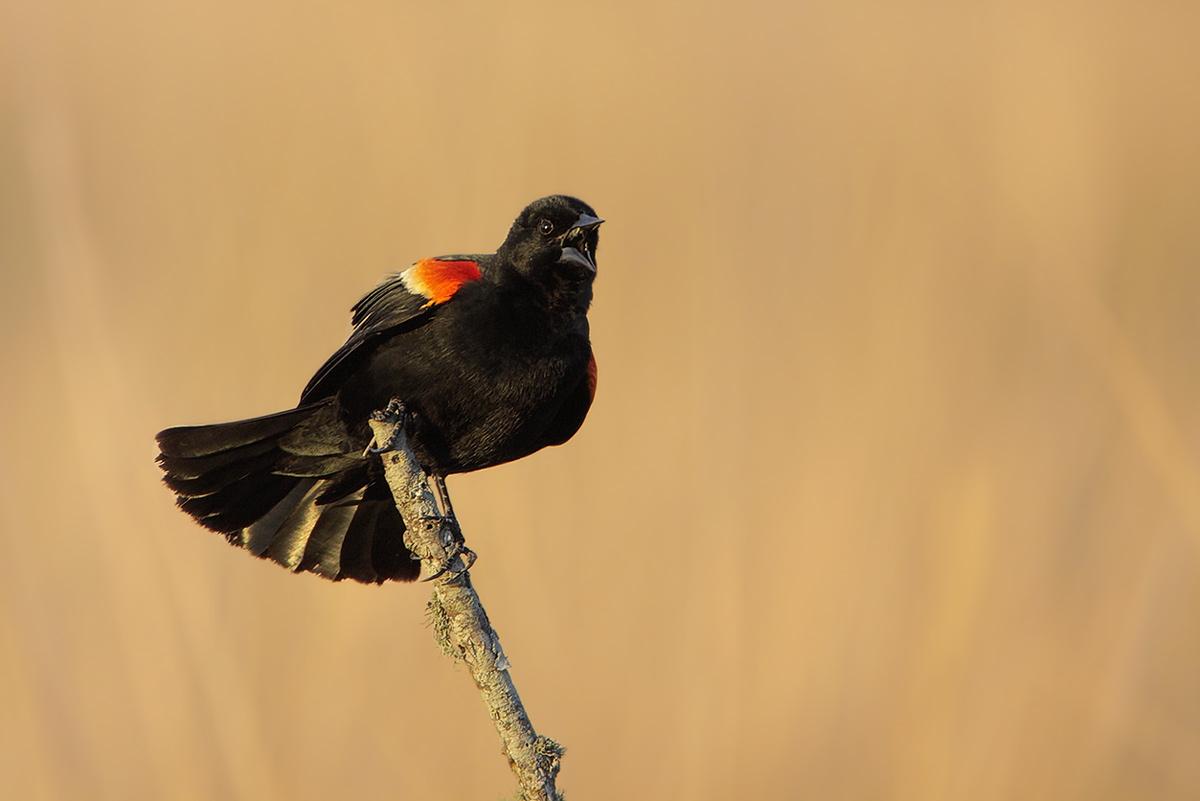
Red-winged blackbird // Greg Lavaty via Flickr
HEAR MY SONG. Males will sing a song to attract females or make a call to confront rivals.
By: Ashley Bergeron
Staff-Writer
As nesting season begins for many birds around IU South Bend, many people might have to deal with birds defending their nests. One of these birds will be red-winged blackbirds. Let’s learn about these birds and how to live with them.
Red-winged blackbirds (Agelaius phoeniceus) are migratory birds that are a sign that spring is coming. They can be found all over the contiguous United States year-round, but some populations migrate north and south depending on the season.
Males come up to the north to set up their territories before females arrive, as females are interested in the males’ territory. Males are black with the eponymous red wing, whereas females are brown and look like many other bird species. They are polygynous, and males can have up to 15 females they defend in their territory.
They prefer wetlands but can be found in fields and forests close to waterways. Because of this preference, they can be found here on campus, especially across the bridge in housing.
Their diet consists of insects and seeds. They prefer to eat on the ground, so if you want to see any in your backyard, spread some seed on the ground.
During nesting season (March through July), males will defend their territory. They will attack other males, predators and even perceived predators, like horses and humans. They spend 25% of daylight hours protecting their territory. Their peak attack season is mid-June – so how do you protect yourself from these protective fathers?
If you know where the birds are nesting, give them plenty of space and consider taking an alternative route. They will also be intimidated and avoid you if you look directly at them. Ultimately, red-winged blackbirds are harmless to us despite their occasional tendency to divebomb pedestrians. If you’re worried about that possibility, you can always wear a brimmed hat.
If you want to learn more about red-winged blackbirds, you can check Cornell’s Lab All About Birds, where information on these birds as well as many others, on their website.
 Red-winged blackbird // Jocelyn Anderson via FlickrDIFFERENT BUT THE SAME. Males and females have different coloring, with males having bold colors to attract females and deter males, and females using camouflage to blend into their surroundings.
Red-winged blackbird // Jocelyn Anderson via FlickrDIFFERENT BUT THE SAME. Males and females have different coloring, with males having bold colors to attract females and deter males, and females using camouflage to blend into their surroundings.